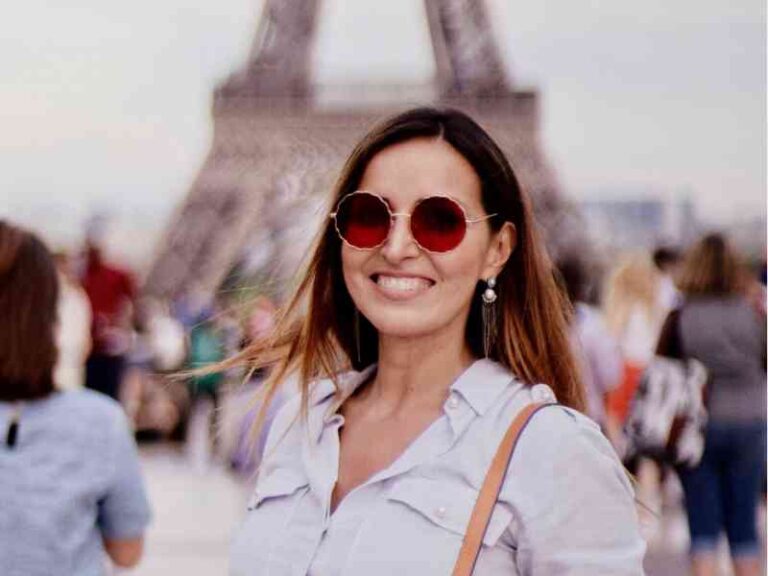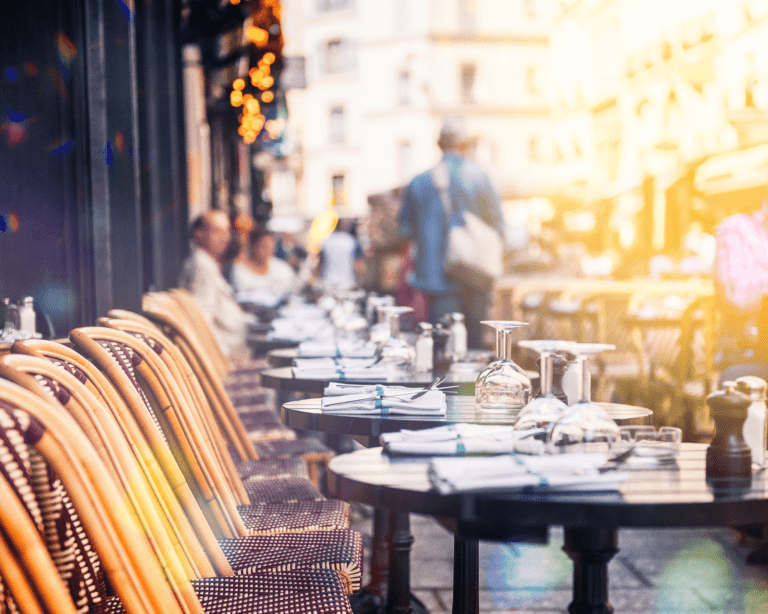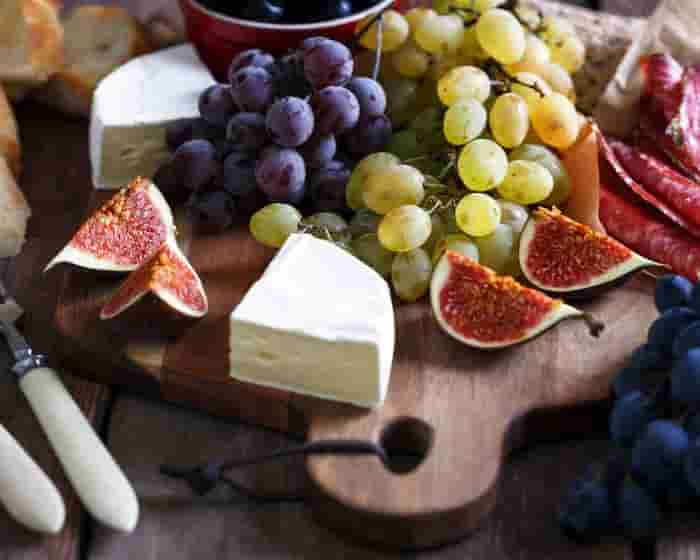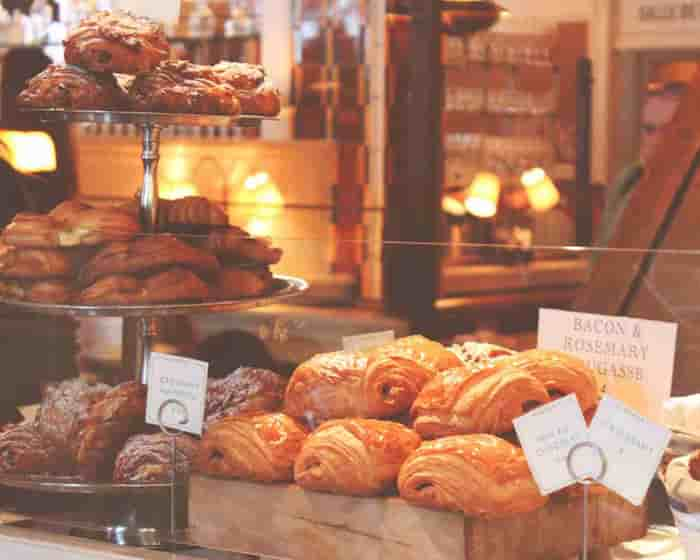5 example texts for reading practice for the French exam DELF A1
Podcast of article content in French
Introduction
Embarking on your journey in the world of French, you've diligently immersed yourself in the language, dedicating considerable time to its study. Over this period, your progress has been steady, culminating in a level of proficiency that allows you to contemplate taking an examination to formally assess your skills.
Enter the DELF exam, a globally recognized test that stands as a testament to your French prowess. This comprehensive assessment evaluates your abilities across the four vital domains: oral comprehension, written comprehension, oral production, and written production. We've previously delved into the essential French skills required to ace the DELF A1 exam, specifically tailored for beginners, in one of our articles.
Now, let's zoom in on a crucial aspect: reading comprehension. During the exam, you're presented with five diverse textual examples, each beckoning you to dive into its depths and grasp the intended meaning. Your task? To unravel the intricacies of these texts and respond to four detailed questions in impeccable French. Fear not; the answers are at your disposal for verification.
However, it's essential to comprehend the true essence of the DELF exam. It isn't about achieving flawless understanding or perfection in your responses. Instead, it emphasizes grasping the content as a whole and articulating your answers to the best of your ability. DELF A1 is designed to assess your foundational knowledge, gauging your command of French in everyday situations.
At this level, you've acquired fundamental skills. You can confidently introduce yourself and others, navigate through simple spoken announcements and instructions, and adeptly respond to basic inquiries about your personal life. Moreover, you've honed the ability to pose uncomplicated questions and engage in straightforward transactions, such as buying items and handling the payment process. As you gear up for the DELF A1 examination, remember that it's not merely a test; it's a reflection of your dedication and the strides you've made in mastering the beautiful language of French. Bonne chance! (Good luck!)
Grammar (25 items) and vocabulary (9 topics) for the DELF A1 French Language Proficiency Test,click here..
French DELF A1 reading practice example 1
Texte :
Dans un café
Marie est au café. Elle commande un café et un croissant.
Le serveur apporte le café et le croissant. Marie paie et dit merci. Puis, elle boit son café et mange son croissant. C’est bon !
Text :
In a café
Marie is in a café. She orders a coffee and a croissant.
The waiter brings the coffee and croissant. Marie pays and says thank you. Then she drinks her coffee and eats her croissant. It's so good!
Questions :
- Qui est au café ?
- Qu’est-ce que Marie commande ?
- Qu’est-ce que le serveur apporte à Marie ?
- Que fait Marie après avoir mangé son croissant ?
Questions :
Who's at the café?
What does Marie order?
What does the waiter bring Marie?
What does Marie do after eating her croissant?
N’oubliez pas de répondre aux questions en utilisant des phrases complètes en français.
Don't forget to answer the questions using complete sentences in French.
Voici les réponses aux questions de l’exercice :
- Marie est au café.
- Marie commande un café et un croissant.
- Le serveur apporte à Marie le café et le croissant.
- Après avoir mangé son croissant, Marie paie et dit merci.
Answers :
Marie is at the café.
Marie orders a coffee and a croissant.
The waiter brings Marie the coffee and croissant.
After eating her croissant, Marie pays and says thank you.
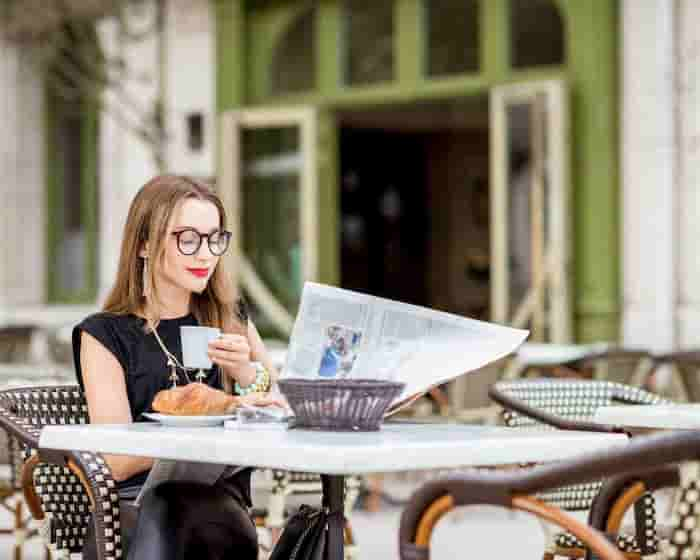
French DELF A1 reading practice example 2
Texte :
La famille Martin
La famille Martin habite dans une petite maison près de la mer. Il y a trois personnes dans la famille : le père, la mère et leur fille, Sophie. Le père s’appelle Marc, la mère s’appelle Anna et Sophie a six ans.
Chaque matin, Marc va travailler à vélo. Anna prépare le petit déjeuner pour la famille. Sophie va à l’école à pied. L’après-midi, après l’école, Sophie joue sur la plage pendant que ses parents travaillent à la maison. Ils sont très heureux dans leur petite maison près de la mer.
Text :
The Martin family
The Martin family lives in a small house by the sea. There are three people in the family: the father, the mother and their daughter, Sophie. The father's name is Marc, the mother's name is Anna and Sophie is six years old.
Every morning, Marc rides his bike to work. Anna prepares breakfast for the family. Sophie walks to school. In the afternoons, Sophie plays on the beach while her parents work at home. They're very happy in their little house by the sea.
Questions :
- Où habite la famille Martin ?
- Combien de personnes y a-t-il dans la famille Martin ?
- Comment Marc se rend-il au travail chaque matin ?
- Que fait Sophie après l’école ?
Questions :
Where does the Martin family live?
How many people are in the Martin family?
How does Marc get to work each morning?
What does Sophie do after school?
N’oubliez pas de répondre aux questions en utilisant des phrases complètes en français.
Don't forget to answer the questions using complete sentences in French.
- La famille Martin habite dans une petite maison près de la mer.
- Il y a trois personnes dans la famille Martin : le père Marc, la mère Anna et leur fille Sophie.
- Marc se rend au travail à vélo chaque matin.
- Après l’école, Sophie joue sur la plage pendant que ses parents travaillent à la maison.
The Martin family lives in a small house by the sea.
There are three people in the Martin family: father Marc, mother Anna and daughter Sophie.
Marc rides his bike to work every morning.
After school, Sophie plays on the beach while her parents work at home.
French DELF A1 reading practice example 3
Texte :
Le voyage en France
Pierre est un étudiant français. Il décide de partir en voyage pour découvrir son propre pays. Il prend le train de Paris à Lyon. En arrivant à Lyon, il visite le vieux quartier de la ville et goûte la cuisine locale. Ensuite, il prend un bus pour se rendre à Nice, sur la côte méditerranéenne. À Nice, il se promène sur la Promenade des Anglais et se baigne dans la mer.
Après avoir passé quelques jours à Nice, Pierre prend un autre train pour aller à Strasbourg, à l’est de la France. Là-bas, il visite la célèbre cathédrale et déguste les spécialités culinaires de la région. Enfin, il retourne à Paris, sa ville natale, où il termine son voyage en visitant la tour Eiffel et le Louvre.
Text :
The trip to France
Pierre is a French student. He decides to take a trip to discover his own country. He takes the train from Paris to Lyon. Arriving in Lyon, he visits the city's old quarter and tastes the local cuisine. Then he takes a bus to Nice, on the Mediterranean coast. In Nice, he strolls along the Promenade des Anglais and swims in the sea.
After spending a few days in Nice, Pierre takes another train to Strasbourg, in eastern France. There, he visited the famous cathedral and sampled the region's culinary specialties. Finally, he returns to his native Paris, where he ends his trip with a visit to the Eiffel Tower and the Louvre.
Questions :
- Où Pierre prend-il le train en premier lieu ?
- Quelle est la première ville que Pierre visite après Paris ?
- Que fait-il à Nice ?
- Où Pierre se rend-il après Nice ?
- Quelles sont les deux attractions touristiques qu’il visite à Paris à la fin de son voyage ?
Questions :
Where does Pierre first take the train?
What's the first city Pierre visits after Paris?
What does he do in Nice?
Where does Pierre go after Nice?
What two tourist attractions does he visit in Paris at the end of his trip?
N’oubliez pas de répondre aux questions en utilisant des phrases complètes en français.
Don't forget to answer the questions using complete sentences in French.
Voici les réponses aux questions de l’exercice :
- Pierre prend le train de Paris à Lyon en premier lieu.
- La première ville que Pierre visite après Paris est Lyon.
- À Nice, il se promène sur la Promenade des Anglais et se baigne dans la mer.
- Après Nice, Pierre se rend à Strasbourg, à l’est de la France.
- À la fin de son voyage, Pierre visite la tour Eiffel et le Louvre à Paris.
Answers :
Pierre takes the train from Paris to Lyon first.
The first city Pierre visits after Paris is Lyon.
In Nice, he strolls along the Promenade des Anglais and swims in the sea.
After Nice, Pierre travels to Strasbourg, in eastern France.
At the end of his trip, Pierre visits the Eiffel Tower and the Louvre in Paris.
French DELF A1 reading practice example 4
Texte :
La journée au parc
Le parc est un endroit agréable pour passer la journée. Ce matin, Laura et son frère Marc se rendent au parc avec leur chien Max. D’abord, ils jouent au ballon sur l’herbe verte. Ensuite, ils vont faire un tour de balançoire et de toboggan.
Plus tard, ils décident de pique-niquer sous un grand arbre. Laura a préparé des sandwiches au jambon et des fruits. Ils mangent ensemble et partagent aussi des biscuits.
Après le déjeuner, ils font une promenade autour du lac du parc. Ils voient des canards nager dans l’eau. Laura donne à manger aux canards avec des miettes de pain. Marc prend des photos des canards et du lac.
En fin d’après-midi, ils rentrent chez eux fatigués mais heureux. C’était une journée parfaite au parc.
Text :
A day in the park
The park is a pleasant place to spend the day. This morning, Laura and her brother Marc go to the park with their dog Max. First, they play ball on the green grass. Then they go for a ride on the swing and slide.
Later, they decide to have a picnic under a big tree. Laura has prepared ham sandwiches and fruit. They eat together and share some cookies.
After lunch, they take a walk around the park lake. They see ducks swimming in the water. Laura feeds the ducks with breadcrumbs. Marc takes photos of the ducks and the lake.
At the end of the afternoon, they return home tired but happy. It was a perfect day at the park.
Questions :
- Qui se rend au parc ce matin ?
- Que font Laura et Marc d’abord au parc ?
- Qu’est-ce qu’ils mangent pendant le pique-nique ?
- Que voient-ils lors de leur promenade autour du lac ?
- Comment se sentent-ils à la fin de la journée ?
Questions :
Who goes to the park this morning?
What are Laura and Marc doing in the park first?
What do they eat at the picnic?
What do they see on their walk around the lake?
How do they feel at the end of the day?
N’oubliez pas de répondre aux questions en utilisant des phrases complètes en français.
Don't forget to answer the questions using complete sentences in French.
- Ce matin, Laura, son frère Marc et leur chien Max se rendent au parc.
- D’abord, Laura et Marc jouent au ballon sur l’herbe verte au parc.
- Pendant le pique-nique, ils mangent des sandwiches au jambon, des fruits et des biscuits.
- Lors de leur promenade autour du lac, ils voient des canards nager dans l’eau.
- À la fin de la journée, ils se sentent fatigués mais heureux après avoir passé une journée parfaite au parc.
Answers :
This morning, Laura, her brother Marc and their dog Max head off to the park.
First, Laura and Marc play ball on the green grass in the park.
During the picnic, they eat ham sandwiches, fruit and cookies.
On their walk around the lake, they see ducks swimming in the water.
At the end of the day, they feel tired but happy after a perfect day at the park.
French DELF A1 reading practice example 5
Texte :
La fête d’anniversaire
Aujourd’hui, c’est l’anniversaire d’Élise. Elle fête ses neuf ans. Sa maman a organisé une grande fête à la maison. Il y a des ballons colorés, un gâteau au chocolat et beaucoup de cadeaux.
Les amis d’Élise arrivent à la fête en début d’après-midi. Ils jouent à des jeux comme la chaise musicale et la pinata. Puis, tout le monde chante “Joyeux anniversaire” à Élise et elle souffle les bougies sur le gâteau.
Après avoir mangé du gâteau, les enfants dansent sur leur musique préférée. Ensuite, ils ouvrent les cadeaux. Élise est très contente des cadeaux qu’elle reçoit : des livres, des jouets et un puzzle.
La fête d’anniversaire se termine en fin d’après-midi. Les amis d’Élise disent au revoir et elle remercie chacun d’eux pour les cadeaux et la belle journée.
Text :
The birthday party
Today is Élise's birthday. She's nine years old. Her mom has organized a big party at home. There are colorful balloons, chocolate cake and lots of presents.
Élise's friends arrive at the party in the early afternoon. They play games like musical chairs and pinata. Then everyone sings "Happy Birthday" to Élise and she blows out the candles on the cake.
After eating the cake, the children dance to their favorite music. Then they open the presents. Élise is very happy with the presents she receives: books, toys and a puzzle.
The birthday party ends in the late afternoon. Élise's friends say goodbye and she thanks each of them for the presents and the beautiful day.
Questions :
- Quel âge fête Élise aujourd’hui ?
- Qu’est-ce que sa maman a organisé pour la fête d’anniversaire ?
- Quels jeux les enfants jouent-ils pendant la fête ?
- Quels sont les cadeaux qu’Élise reçoit ?
- Comment se termine la fête d’anniversaire ?
Questions :
How old is Élise today?
What has her mom organized for the birthday party?
What games are the children playing at the party?
What presents does Elise receive?
How does the birthday party end?
N’oubliez pas de répondre aux questions en utilisant des phrases complètes en français.
Don't forget to answer the questions using complete sentences in French.
Voici les réponses aux questions de l’exercice :
- Élise fête ses neuf ans aujourd’hui.
- Sa maman a organisé une grande fête à la maison avec des ballons colorés, un gâteau au chocolat et beaucoup de cadeaux.
- Pendant la fête, les enfants jouent à des jeux comme la chaise musicale et la pinata.
- Élise reçoit des livres, des jouets et un puzzle comme cadeaux.
- La fête d’anniversaire se termine en fin d’après-midi, les amis d’Élise disent au revoir et elle les remercie chacun pour les cadeaux et la belle journée.
Answers :
Élise is nine years old today.
Her mom has organized a big party at home, with colorful balloons, chocolate cake and lots of presents.
During the party, the children play games like musical chairs and pinata.
Elise receives books, toys and a puzzle as presents.
At the end of the afternoon, Elise's friends say goodbye and she thanks them all for the gifts and the beautiful day.



